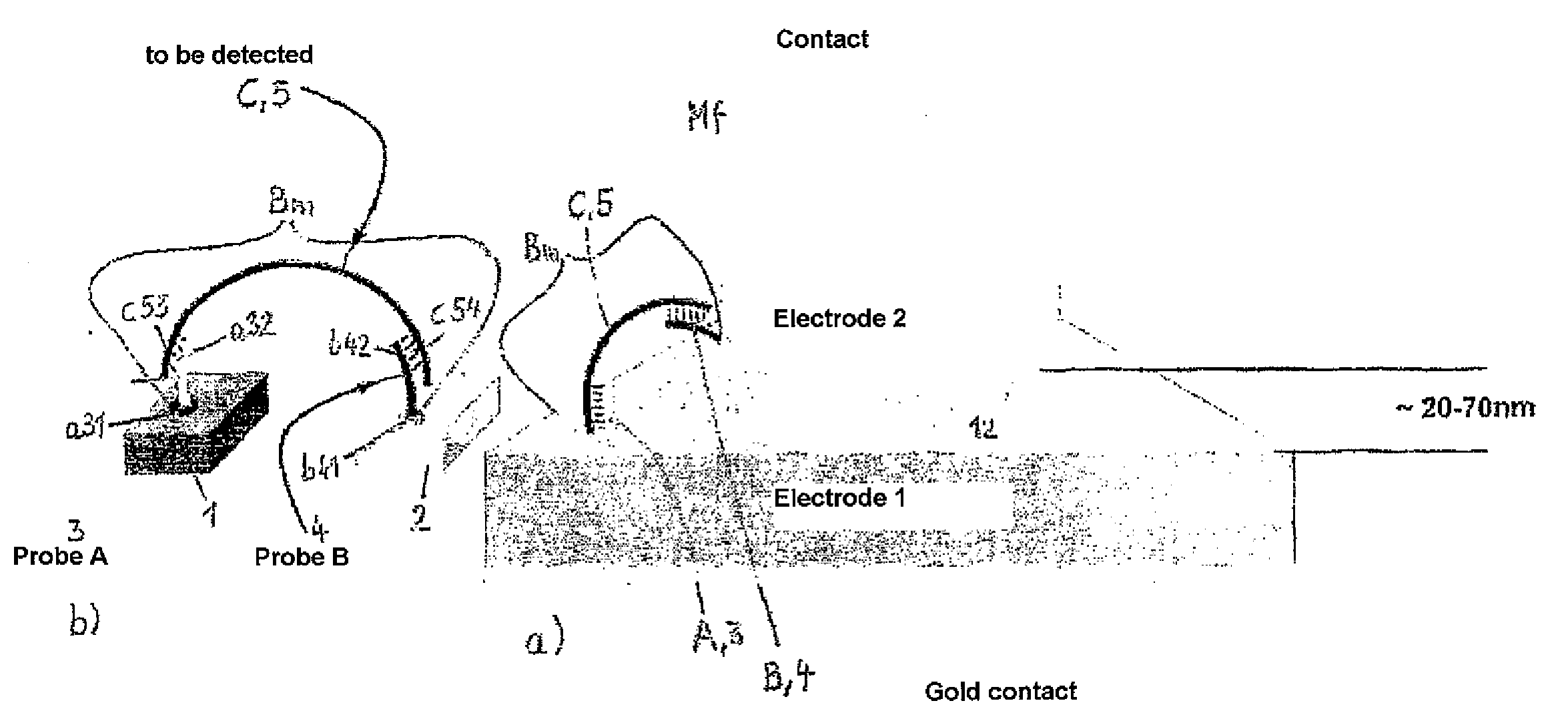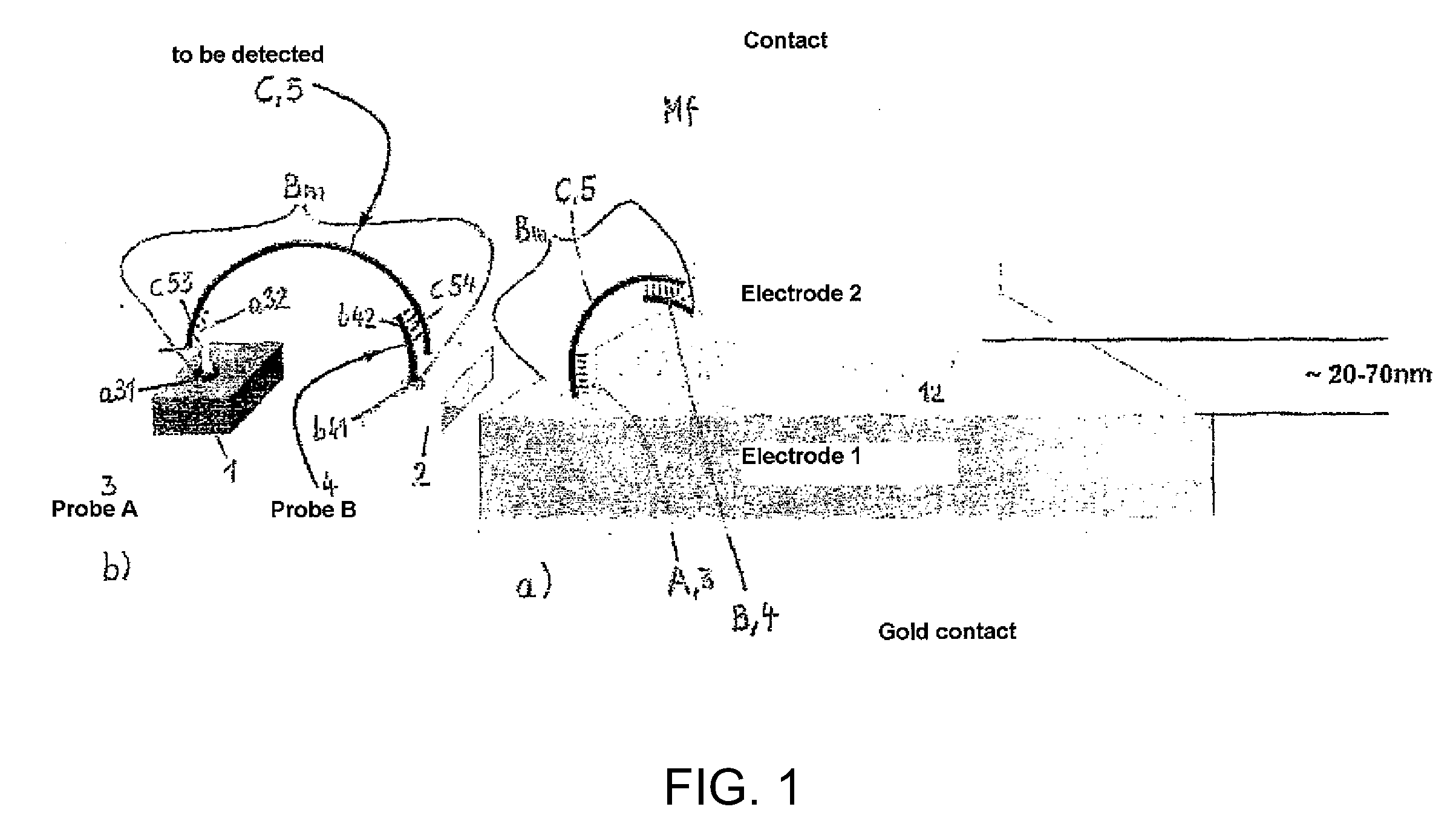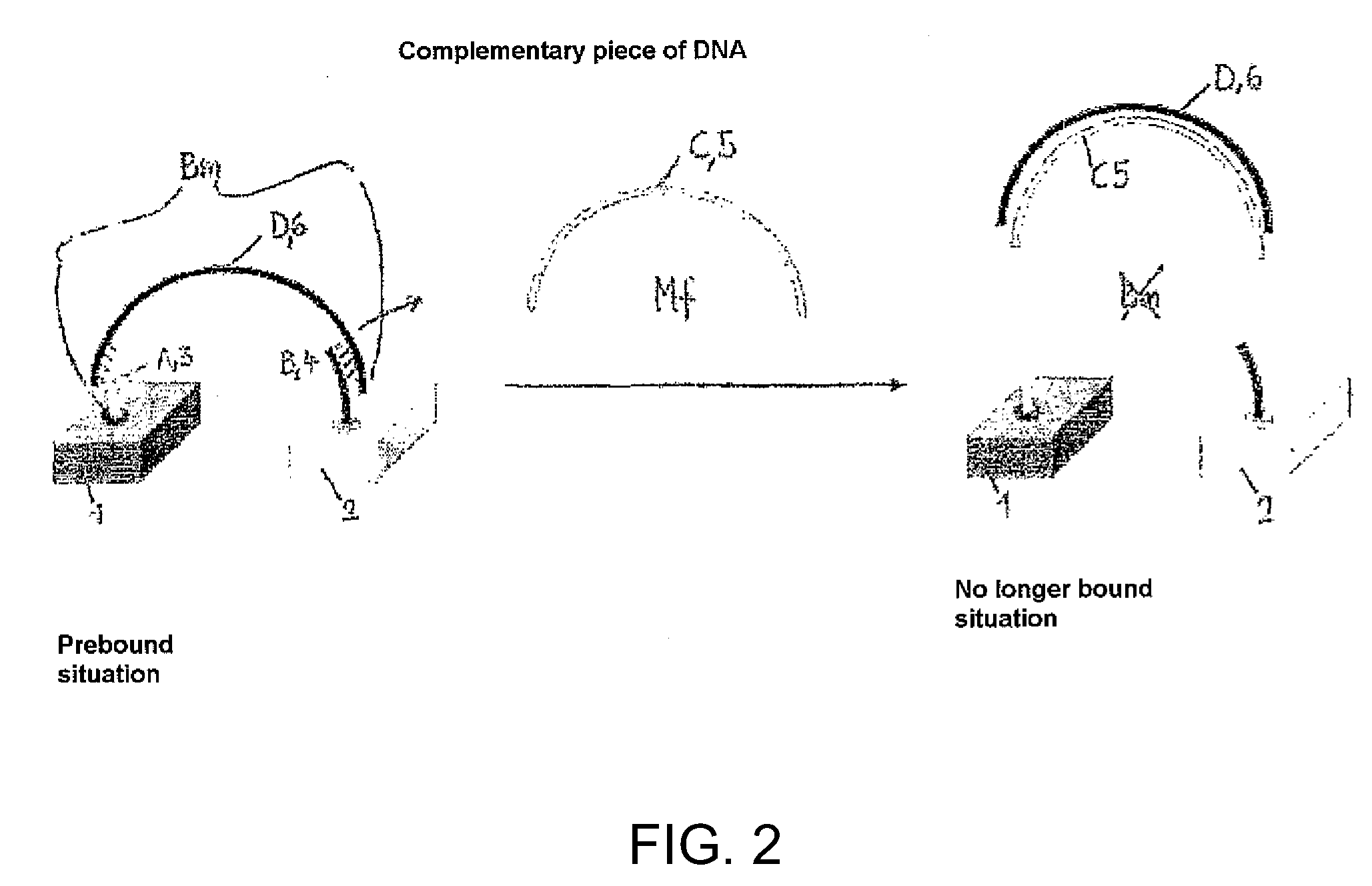Method for Identifying and Quantifying Organic and Biochemical Substances
a biochemical and organic technology, applied in the field of nucleic acids identification, can solve the problems of difficult measurement, negative influence of analyte detection, complex established system, etc., and achieve the effect of reducing the detection limit and increasing the efficiency of cross-linking reaction
- Summary
- Abstract
- Description
- Claims
- Application Information
AI Technical Summary
Benefits of technology
Problems solved by technology
Method used
Image
Examples
Embodiment Construction
:
[0050]1. Sensor fabrication
[0051]2. Immobilization; possibility helper oligo-nucleotide; sequence selection
[0052]3. Sample preparation, PCR; occasional denaturation of the nucleic acid, as long as this is present as a double-strand
[0053]4. Measurement before / during / after; washing; temperature
[0054]5. Chip PCR
[0055]ad 1: Sensor Fabrication
[0056]The nanosensor suggested according to the invention is schematically shown in FIG. 1a. The material combination shown shall only serve as an example and only demonstrates one of the possible variants for execution. For the purpose of clarity, only a single electrode link is represented as a section. However, it is evident that several of these links, too, may be unified in a connected or unconnected form on a chip (“array”).
[0057]For manufacture, a n+-doped silicon wafer is thermally oxidined. The thickness of the SiÔ layer applied this way lies within the magnitude of a few 10 nm. Ultimately, this determines the width of the nanogap.
[0058]A...
PUM
| Property | Measurement | Unit |
|---|---|---|
| thickness | aaaaa | aaaaa |
| thickness | aaaaa | aaaaa |
| thickness | aaaaa | aaaaa |
Abstract
Description
Claims
Application Information
 Login to View More
Login to View More - R&D
- Intellectual Property
- Life Sciences
- Materials
- Tech Scout
- Unparalleled Data Quality
- Higher Quality Content
- 60% Fewer Hallucinations
Browse by: Latest US Patents, China's latest patents, Technical Efficacy Thesaurus, Application Domain, Technology Topic, Popular Technical Reports.
© 2025 PatSnap. All rights reserved.Legal|Privacy policy|Modern Slavery Act Transparency Statement|Sitemap|About US| Contact US: help@patsnap.com



